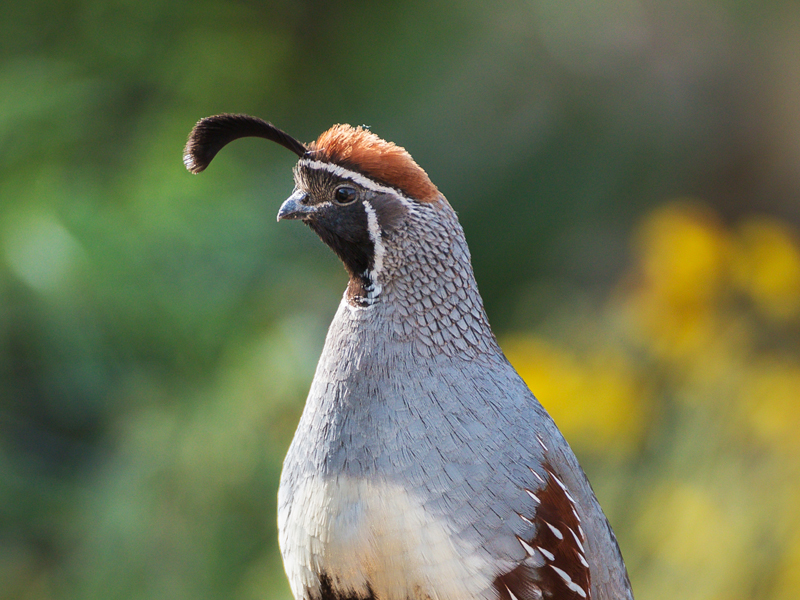Garden visitors often ask why Gambel’s quail have those curious-looking plumes on their heads that are especially prominent on the males. Composed of six black, comma-shaped feathers that tightly overlap, you might guess that this topknot’s function is to impress. However, researcher Julie Hagelin at the University of New Mexico discovered that, in fact, a female quail could not care less about fancy head ornaments. She will instead select her partner based the male’s foraging display and body size.
So, you might ask, does the plume have a purpose at all? It turns out that its main function is to intimidate other male quail. Researchers found by shortening the topknots, they lowered a male’s standing among its male competitors; artificially enhancing the length of the topknots elevated their chances of outcompeting the other males. Winning males erect their plumes to display dominance while losers signal defeat by flattening them, the quail version of giving up and crying “Uncle!”
The female quail have a smaller version of the topknot, and the function is unknown. However, as in other species, some characteristics, while shared by both males and females, are often more prominent and more functional in one sex than in the other.
